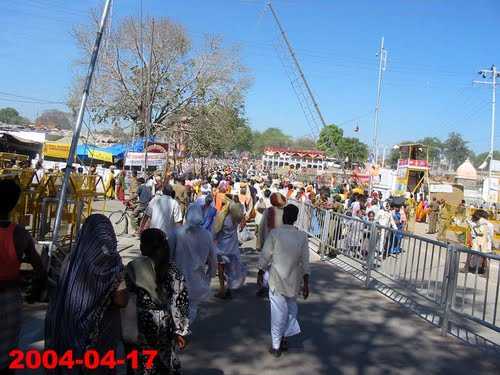
Ujjain Kumbh Mela Dates
The Ujjain Kumbh Mela takes place every 12 years in the city of Ujjain in Madhya Pradesh. The last Kumbh Mela at Ujjain was held in 2016 and the next one will take place after 2028. The fair is also known as Simhasth Mela in Hindi as it derives its name from the celebratory event of planet Jupiter (Brahaspati) entering in the Leo sun sign( Simha Rashi), according to Hindu astrology. It is one of the four Kumbha Melas. The main bathing ritual takes place on the full moon day in Vaisakha month (April-May) of the Hindu calendar. Ujjain is also home to Lord Mahakaleshwar, one of the 12 'jyotirlings' in the country.
History of Kumbh Mela
Located in Malwa region of central India, Ujjain is an ancient city based on the bank of the Kshipra River. Considered to be one of the seven sacred cities (Sapta Puri) by the Hindus, it is believed to be the place where Lord Krishna, Balarama and Sudama, received their education from Maharshi Sandipani.The Ujjain Kumbh Mela first began in the 18th century inspired by the Nashik-Trimbakeshwar Kumbh Mela. The 'Khulasat-ut-Tawarikh' is the earliest available text that mentions Ujjain as a sacred city. It does not talk about any fair at Ujjain although it does mention about the Kumbh Melas at Haridwar, Prayag and Trimbak. Just like the fairs at Prayag and Nashik, the Ujjain mela was not called a Kumbh Mela until the 19th century. The term Kumbh Mela was only used for the Haridwar fair.
Legend of Kumbh Mela
Once the gods (Devdas) decided to churn the sea (Samudra Manthan), as it contained the immense treasures of wealth and mortality. The most glorious treasure among them was the ?Amrit? or the nectar of immortality. Churning of the sea, however, required immense strength and the combined strength of all the gods was not enough to carry out the cumbersome task. Thus, the gods asked the Demons (Asuras) to join hands and help them fulfil the task. In return, the gods had promised the demons an equal share of the nectar. After 1000 long years of struggle, the Kumbh (pot) of nectar finally emerged out of the ocean. Fearing that drinking the nectar would turn the demons into immortal, the demigods took away the nectar pot and fled. According to the legend, the chase between the demons and gods stretched for twelve days, and during the chase, drops of the nectar dripped over Haridwar, Allahabad, Ujjain and Nashik, which turned these cities into pilgrimage sites. This legend has been passed over from generations to generations and has led to the kick-start of the twelve-day festival of Kumbh Mela.
Celebrations of Kumbh Mela
Pilgrims from all corners of the country gather in the city of Ujjain for the holy fair. During the Kumbh Mela, non-vegetarian food is banned throughout the city. Some ancient delicacies are prepared for the pilgrims that include Dal Bafale, a dish similar to the famous Rajasthani dish Dal Baati. Saints with matted locks of hair, their bodies covered in ashes and tridents in hand can be seen roaming all around. The city is filled with all kinds of artists, from astrologers to palmists to snake-charmers, the list does not end. Saffron becomes the colour of the city and colourful flags and banners flow across all streets. The air is engulfed with the hymns of the saints chanting the prayer of river Ganges along with the rhythms of conch shells. Bands play and people dance in euphoria.
Kumbh Mela Reviews
Add a Review
No reviews yet
Your Rating:
5 stars
4 stars
3 stars
2 stars
1 star
Write a review
Photos of Kumbh Mela
Comments on Kumbh Mela
Post Your Comment


















![]()_20170925133436.jpg)